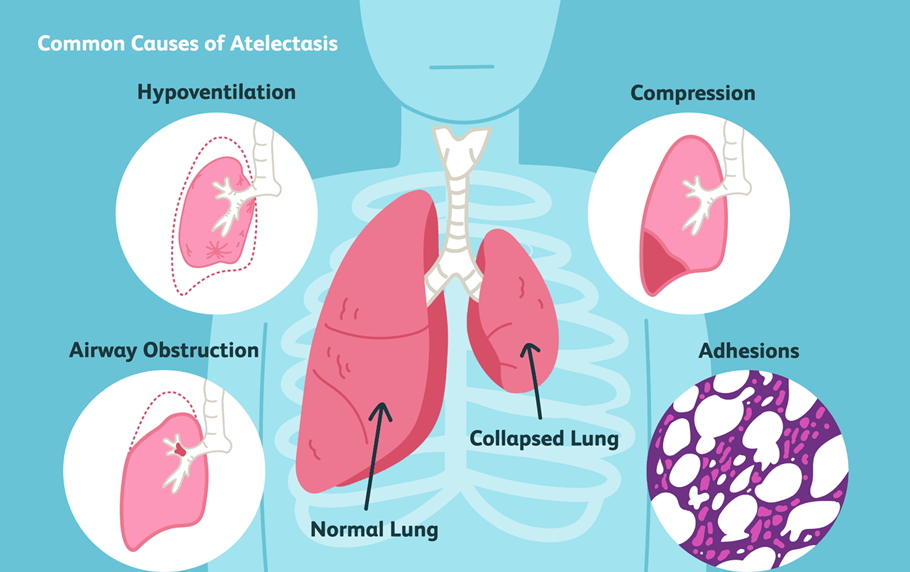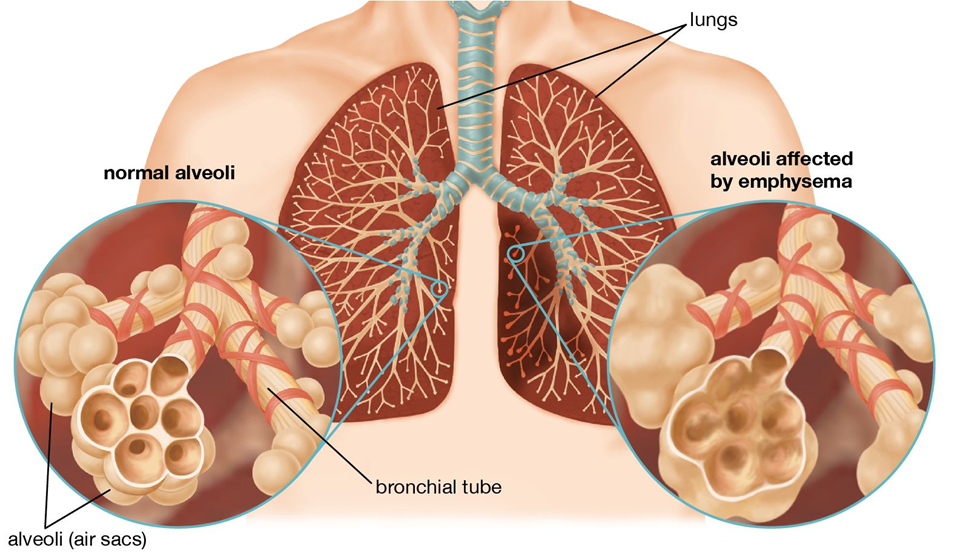A nurse is assessing a client who is 2 days postoperative and is auscultating their bilateral breath sounds. The nurse notes absent breath sounds in the bases. The nurse should suspect which postoperative complication is occurring in this client?
Atelectasis
Pulmonary embolism
Arterial thrombus
Pneumonia
The Correct Answer is A
Choice A Reason:
Atelectasis is a common postoperative complication, especially in patients who have undergone abdominal or thoracic surgery. It occurs when the alveoli in the lungs collapse, leading to reduced or absent breath sounds in the affected areas. This condition can result from shallow breathing, pain, or immobility after surgery. The absence of breath sounds in the bases of the lungs is a key indicator of atelectasis. Preventive measures include encouraging deep breathing exercises, using incentive spirometry, and early mobilization of the patient.

Choice B Reason:
Pulmonary embolism (PE) is a serious condition where a blood clot travels to the lungs, causing a blockage in one of the pulmonary arteries. While PE can present with symptoms such as sudden shortness of breath, chest pain, and rapid heart rate, it is less likely to cause absent breath sounds in the lung bases. Instead, PE may lead to decreased oxygen levels and respiratory distress. Diagnosis typically involves imaging studies such as a CT pulmonary angiography.
Choice C Reason:
Arterial thrombus refers to a blood clot that forms in an artery, which can lead to tissue ischemia and infarction. This condition is more commonly associated with cardiovascular events such as myocardial infarction or stroke. It does not typically present with absent breath sounds in the lungs. Instead, symptoms may include pain, pallor, and loss of function in the affected area. Diagnosis and treatment focus on restoring blood flow to the affected tissues.
Choice D Reason:
Pneumonia is an infection of the lungs that can cause symptoms such as cough, fever, and difficulty breathing. While pneumonia can lead to abnormal breath sounds, such as crackles or wheezes, it is less likely to cause completely absent breath sounds in the lung bases. Pneumonia is usually diagnosed through clinical examination, chest X-rays, and sputum cultures. Treatment involves antibiotics and supportive care to manage symptoms.
Nursing Test Bank
Naxlex Comprehensive Predictor Exams
Related Questions
Correct Answer is C
Explanation
Choice A Reason:
“Prevents pressure ulcers” is incorrect. While positioning can help prevent pressure ulcers, the orthopneic position is specifically used to aid in breathing rather than to prevent pressure ulcers. Pressure ulcers are typically managed by regularly repositioning the client and using pressure-relieving devices.
Choice B Reason:
“Supports hip extension” is incorrect. The orthopneic position does not primarily support hip extension. This position involves sitting up and leaning forward, which does not significantly affect the hips.
Choice C Reason:
“Facilitates breathing” is correct. The orthopneic position, also known as the tripod position, helps to improve breathing in clients with COPD. By leaning forward and resting the arms on a table or knees, the diaphragm can move more freely, and accessory muscles of respiration are better utilized, reducing the work of breathing.

Choice D Reason:
“Promotes urinary elimination” is incorrect. The orthopneic position is not intended to promote urinary elimination. Urinary elimination is typically managed through other interventions such as ensuring adequate hydration and, if necessary, using a catheter.
Correct Answer is A
Explanation
Choice A Reason:
“N95 (personal respirator mask)” is correct because varicella (chickenpox) is an airborne disease. The N95 mask is designed to filter out at least 95% of airborne particles, making it essential for protecting healthcare workers from inhaling infectious agents.
Choice B Reason:
“Surgical mask” is incorrect because while surgical masks provide a barrier against large respiratory droplets, they do not offer sufficient protection against airborne particles. Varicella can be transmitted through tiny airborne droplets, which necessitates the use of an N95 mask.
Choice C Reason:
“They don’t need a mask” is incorrect because healthcare workers must wear appropriate personal protective equipment (PPE) to prevent the spread of infectious diseases. Not wearing a mask would put the nurse at risk of contracting varicella.
Choice D Reason:
“Only the client needs a mask” is incorrect because while it is important for the client to wear a mask to reduce the spread of infectious droplets, the nurse also needs to wear an N95 mask to protect themselves from airborne transmission.
Whether you are a student looking to ace your exams or a practicing nurse seeking to enhance your expertise , our nursing education contents will empower you with the confidence and competence to make a difference in the lives of patients and become a respected leader in the healthcare field.
Visit Naxlex, invest in your future and unlock endless possibilities with our unparalleled nursing education contents today
Report Wrong Answer on the Current Question
Do you disagree with the answer? If yes, what is your expected answer? Explain.
Kindly be descriptive with the issue you are facing.
